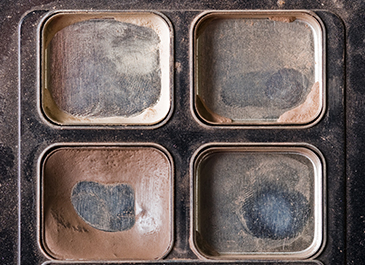When most of you open your medicine cabinets you probably see a plethora of hair products, creams, toothpaste, makeup, soaps, deodorants. However, you probably aren’t thinking about the ingredients in these seemingly innocuous products; they may actually contain thousands of chemicals, some of which are known to have, or suspected of having, adverse affects on our health. Typically, these chemicals are what preserve cosmetics, giving colour, fragrance and texture.
The Issues
The cosmetic industry is massive, and, unfortunately, in Canada, there are little (if any) restrictions to regulate the ingredients in cosmetics. In fact, some fragrance recipes are considered proprietary, meaning manufacturers are not required to disclose every ingredient, let alone their safety for human use.
If you are thinking about a spring cleanse this year, why not start with your medicine cabinet? Below are some tips in creating a chemical-free home.
Getting Started
Reading a cosmetic label takes patience (and squinting!), and trying to decipher chemicals is meaningless to most people. However, it is important to be informed about the major chemical culprits, ingredients with evidence showing they may disrupt and mimic hormones, contribute to cancer, exacerbate allergies and trigger asthma.
Five Big Offenders
Phthalates—These act as solvents or plasticizers in nail products and as fragrances in many cosmetics. They are considered hormonal disrupters. Even products labelled “fragrance free” may contain these chemicals as masking agents.
Formaldehyde—Preservative compounds, found in a wide range of cosmetics, cause the release of formaldehyde. This received wide media attention recently with Health Canada’s new ban on the “Brazilian Blowout.” Formaldehyde is a known carcinogen and a skin and eye irritant.
Butylated Hydroxyanisole (BHA)—This is used to preserve lipsticks and moisturizers. BHA is a potential human carcinogen and may induce allergic reactions in the skin and interfere with hormone function.
Parabens—These are classified as the most widely used preservatives in cosmetics. They mimic estrogen when absorbed through the skin, which can alter reproduction in both men and women. Parabens may also lead to kidney and liver damage.
Coal Tar Dyes—These add colour to cosmetics and hair dyes. Coal tar is a recognized human carcinogen and may also contain heavy metals (i.e. aluminum), which is toxic to the brain.
What to Do
Empower yourself. There are plenty of organizations that provide handy resources that make shopping for clean cosmetics a bit easier. To assess the safety of your current products, search the Environmental Working Group’s database Skin Deep: www.cosmeticsdatabase.com. If you are out and about, shopping for new natural products, try the Sustainable Shoppers Guide at www.davidsuzuki.org.
With all the different ways that we interact with our bodies on a daily basis, it’s imperative that we consider what we apply to our skin as well. Be aware of the impact that personal care products have on your health, and start your body product spring cleanse today!
A naturopathic physician at Sage Clinic in Vancouver, Dr. Stephanie Peltz has a special interest in promoting healthy hormone balance in both men and women, which includes assessing and optimizing reproductive health, thyroid function, blood sugar regulation and adrenal gland performance. Visit www.drpeltz.com or call 604.697.0397 for more information.

